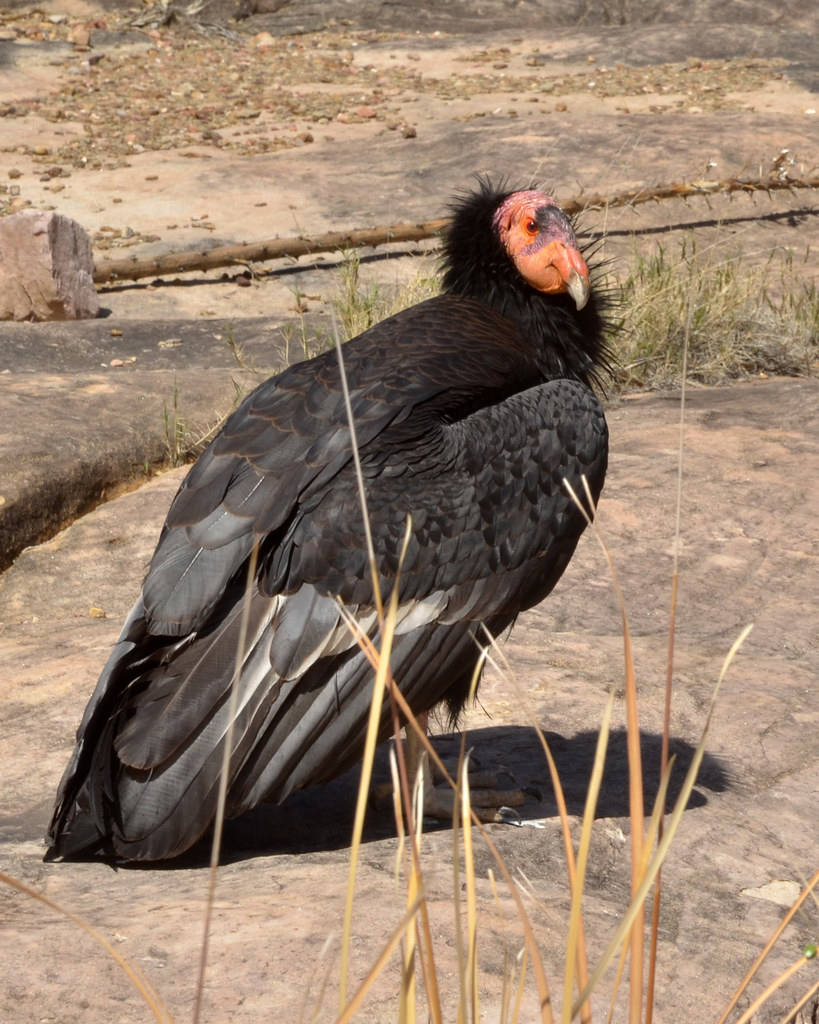California Condor #87 gets wet in Pipe Creek along the Tonto Trail in Grand Canyon National Park.

Detailed Description
Regarded as one of the rarest birds in the world, the California condor (Gymnogyps californianus) is the largest land bird in North America with a wingspan up to 9 1/2 feet and weighing up to 23 pounds. Adults are primarily black except for triangle-shaped patches of bright white underneath their wings. These patches are visible when condors are flying overhead and offer a key identification characteristic. Males and females are identical in size and plumage. The bare heads of condors are grayish-black as juveniles and turn a dull orange-pink as adults.
Condors are members of the New World vulture family and are opportunistic scavengers, feeding exclusively on dead animals such as deer, cattle, rabbits, and large rodents.
Condors are members of the New World vulture family and are opportunistic scavengers, feeding exclusively on dead animals such as deer, cattle, rabbits, and large rodents.
There are currently over 70 condors flying free in northern Arizona and southern Utah, including several that were raised in wild nest caves within or near to the Grand Canyon.
The rest come from the captive breeding program. Even the wild-raised birds are mostly now wearing numbered tags and transmitters. The numbers allow you to learn more specifics about any bird you get a close look at.
So look out for these magnificent birds soaring on their 9-foot (nearly 3-meter) wingspan over Grand Canyon National Park. During the warmer months they are seen regularly from the South Rim and frequently also from the North Rim. On the South Rim, try scanning the cliffs and Douglas-fir trees below the Bright Angel Lodge late in the afternoon. Most nights from late April through July and to some degree from March through October, some condors select overnight roosts in that area.
Sources/Usage
Public Domain.

